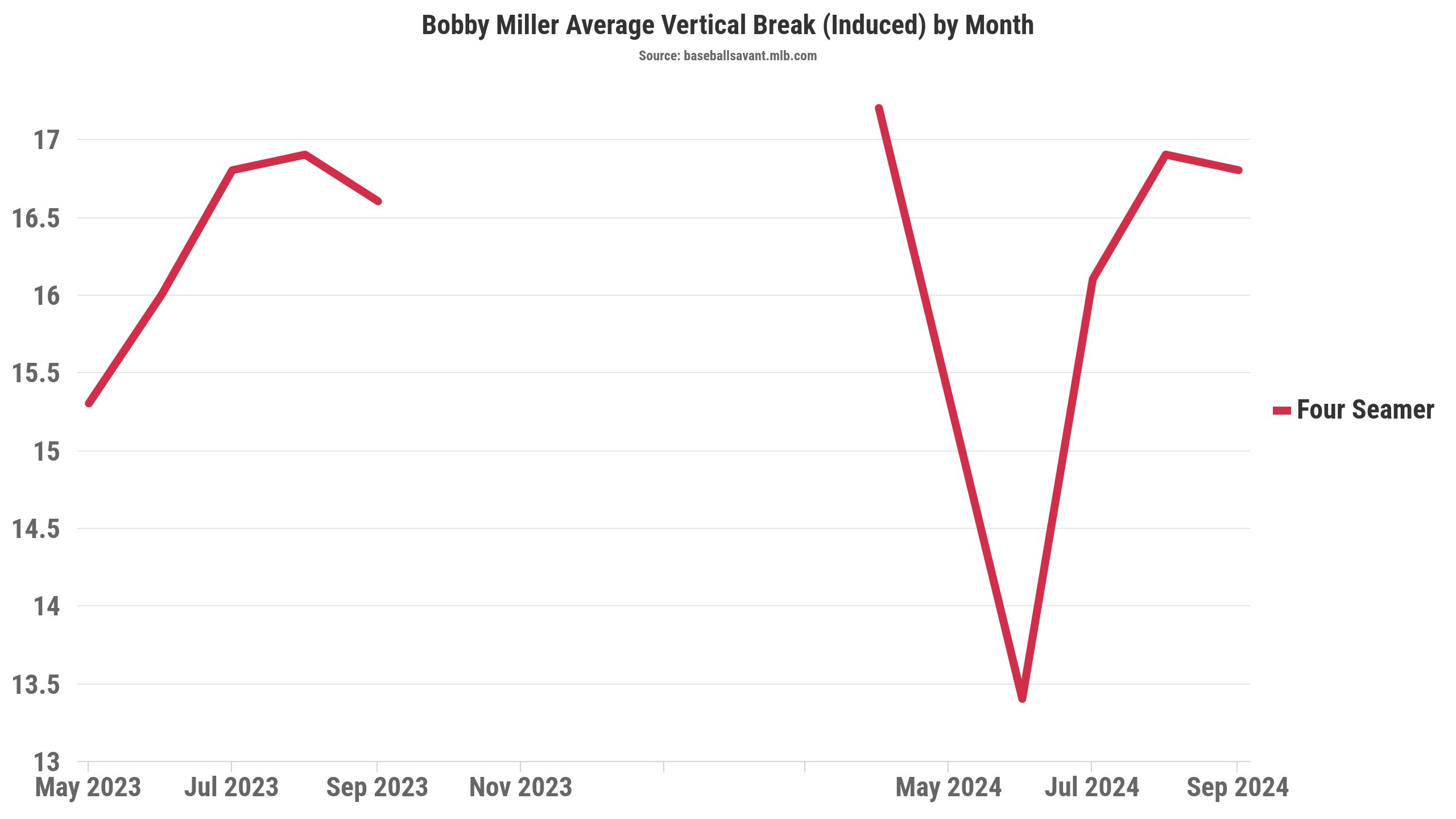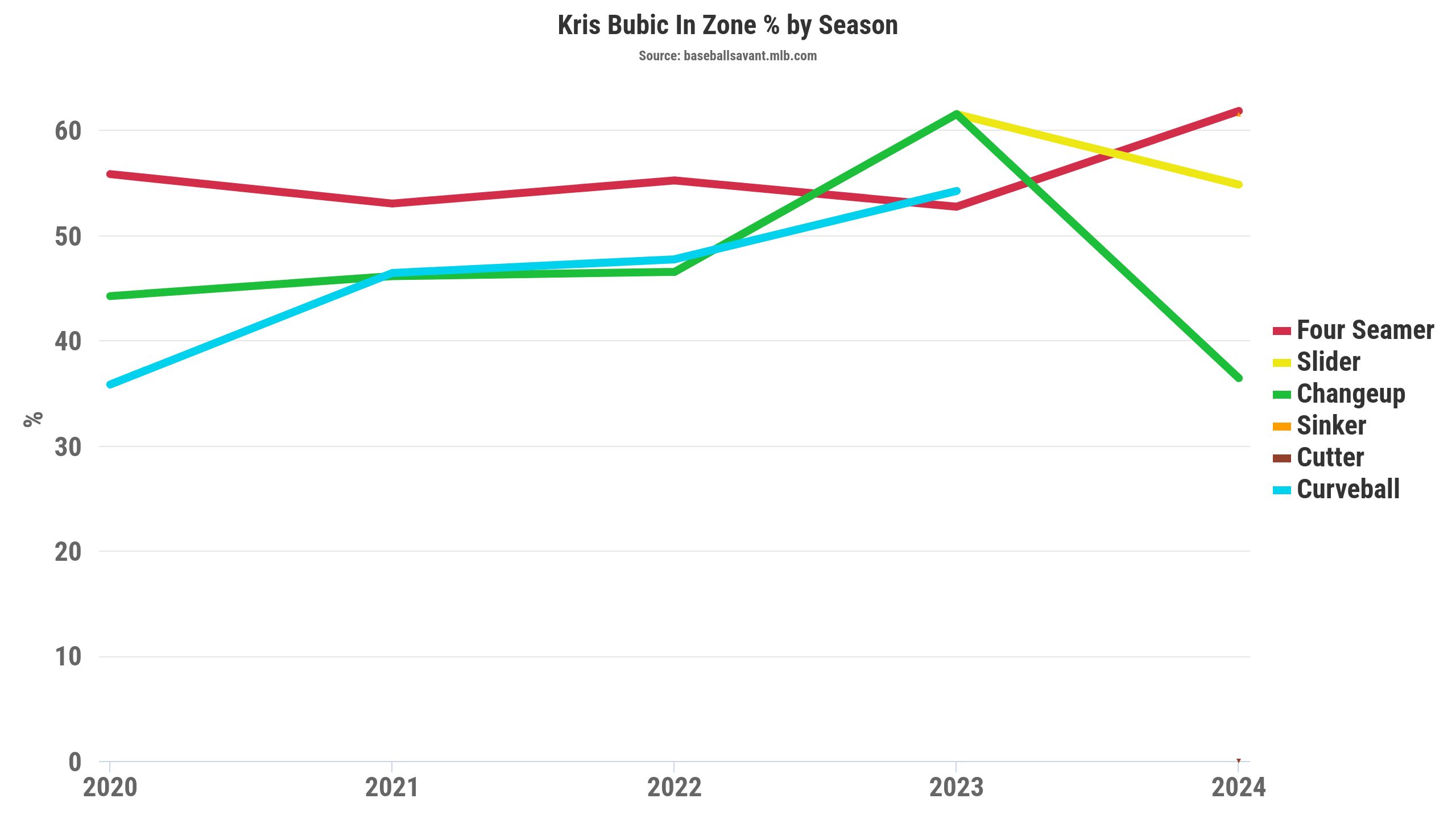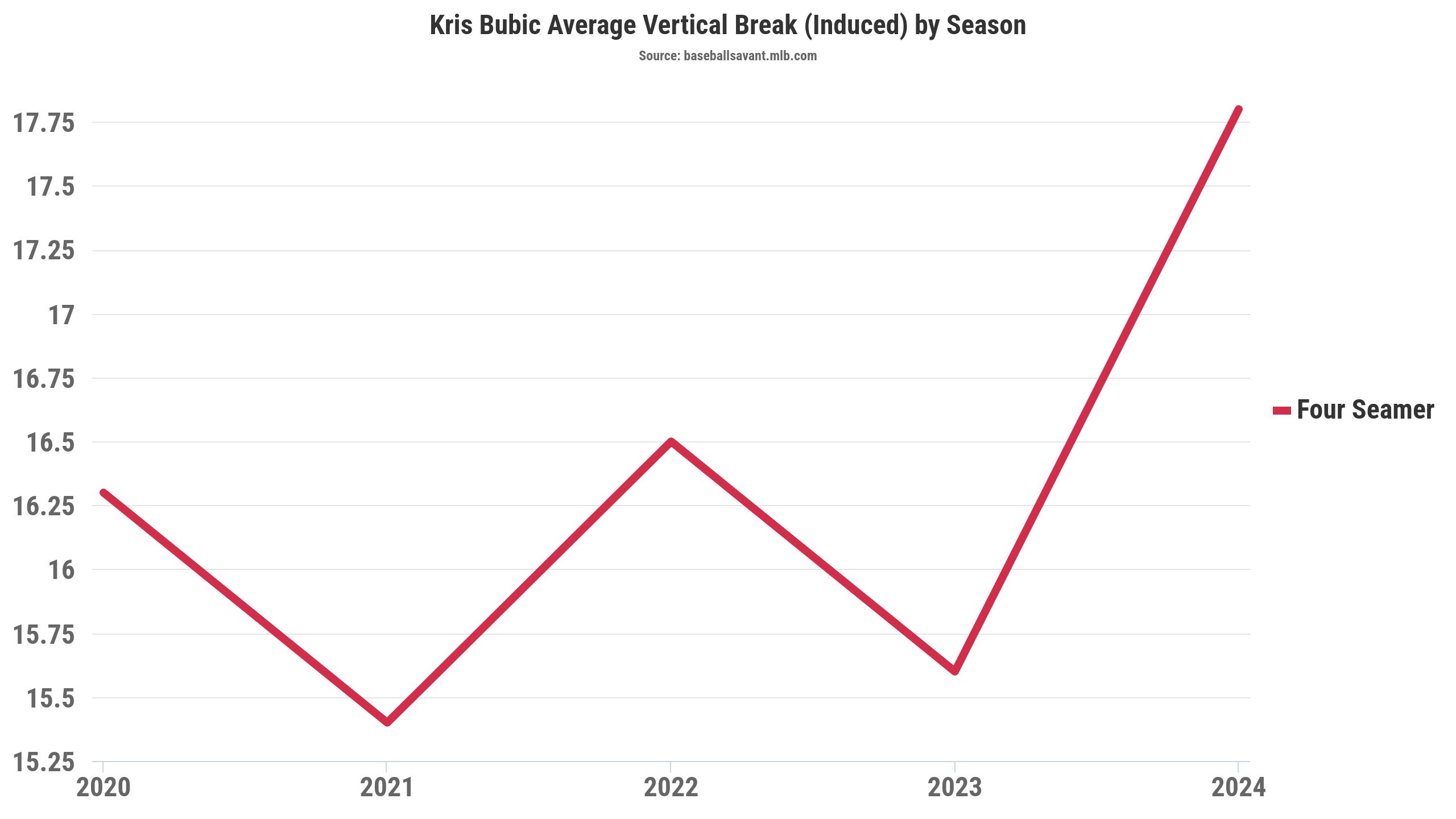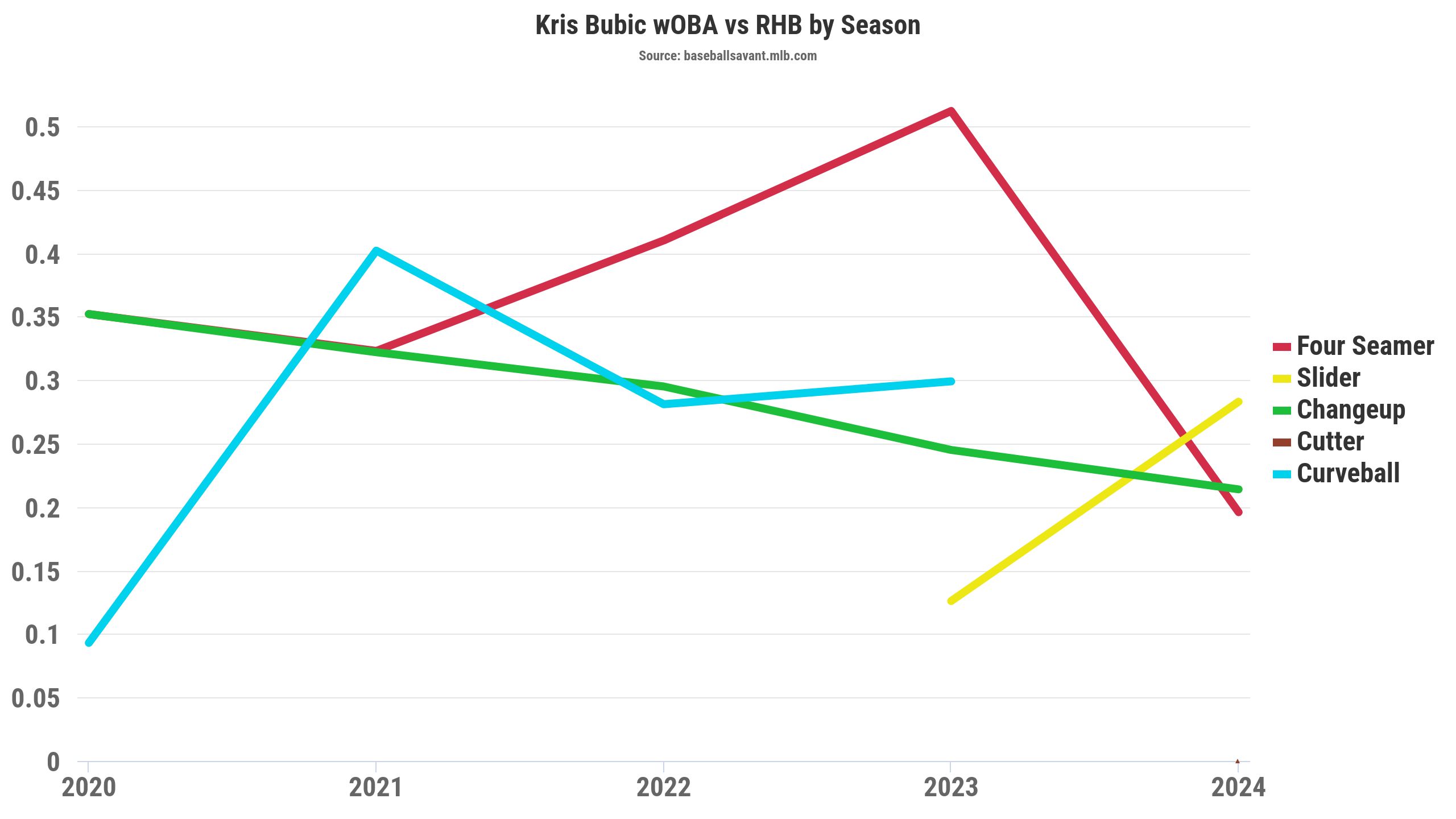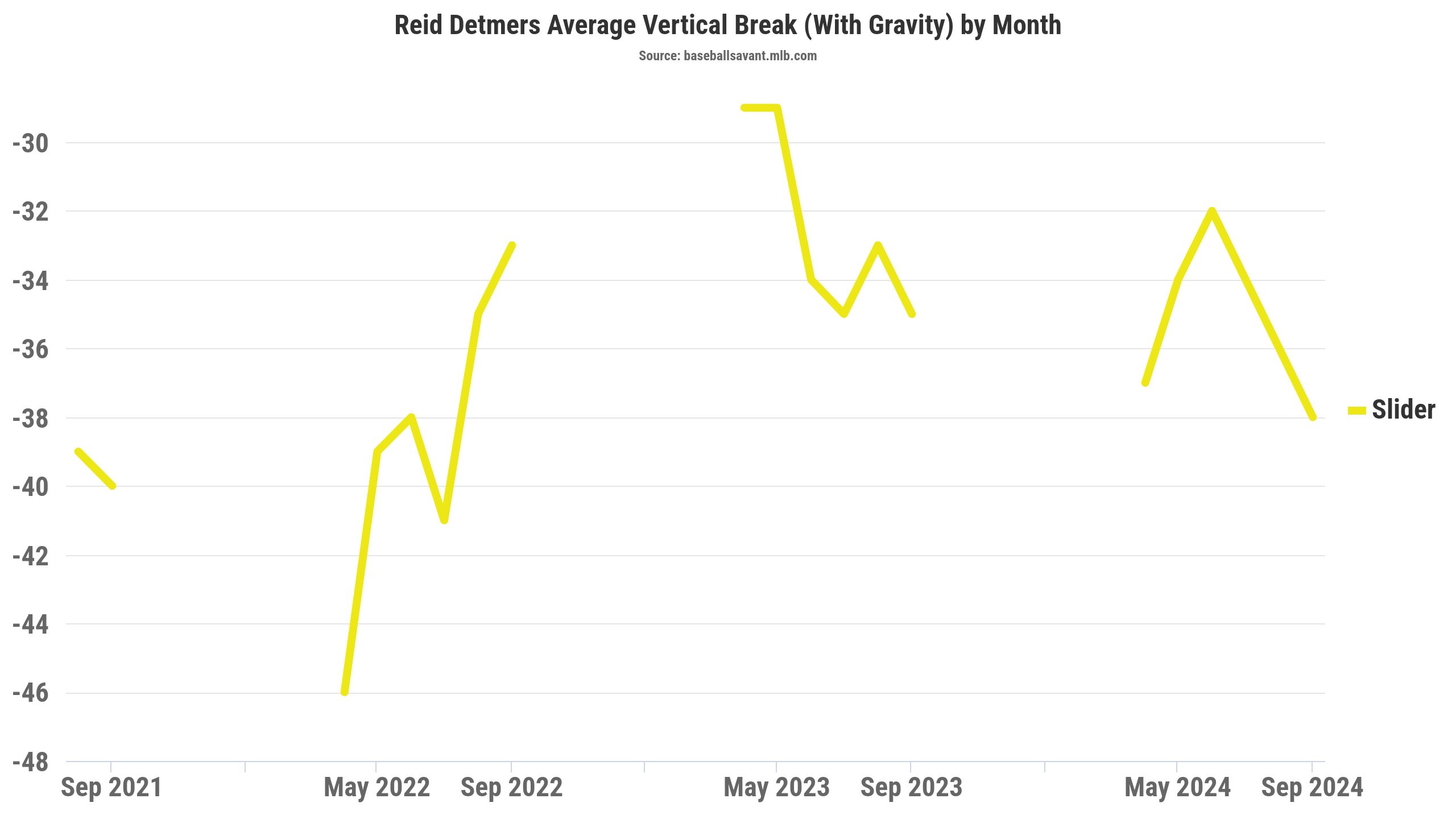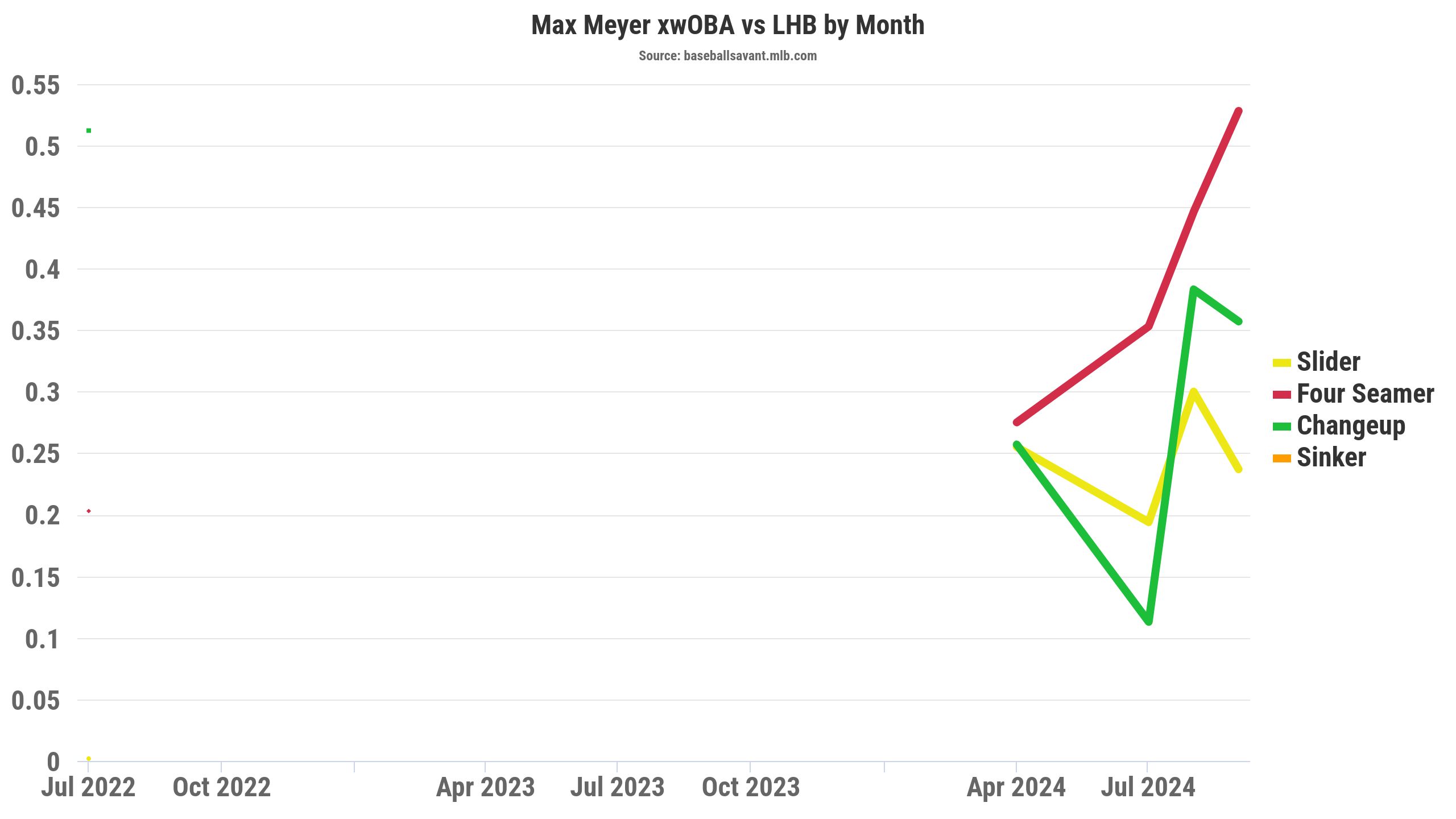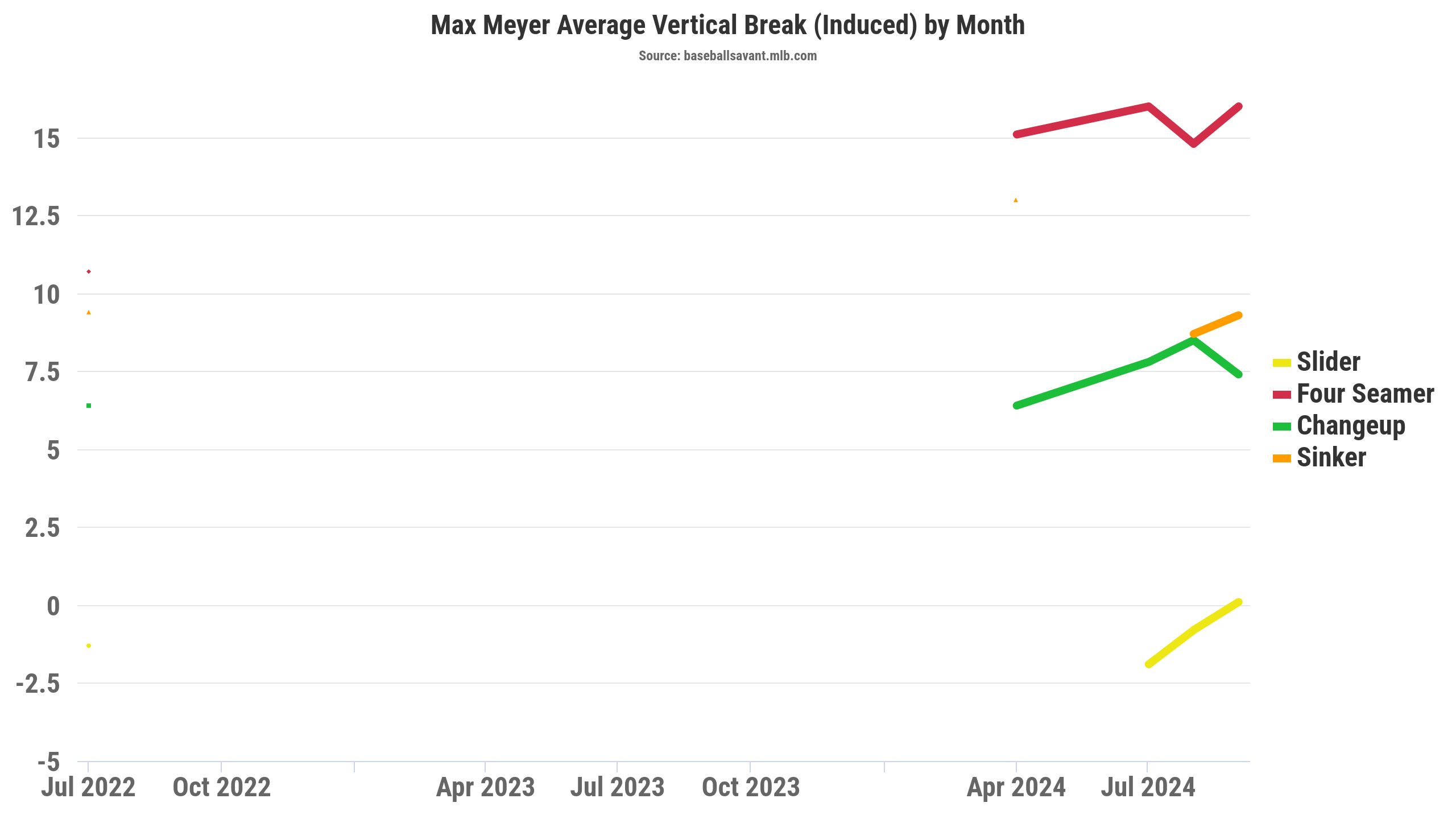Corbin's fantasy baseball draft sleepers, later-round starting pitchers to target in draft-and-hold leagues for 2025. These are fantasy baseball SP value picks.
We're still early in the fantasy baseball draft season, however we'll have more information and data as winter turns to spring. To identify late-round pitcher sleepers in draft and hold leagues, we're looking at starting pitchers going around pick 350 or later in Draft Champions leagues.
This requires fantasy managers to dip deep into the player pool, with the potential to hit on late-round options. The average draft position (ADP) data in this article has come from the NFBC Draft Champions leagues since December 15, involving 15-team leagues with a 50-round draft without waiver pickups.
These pitchers came via leaderboards I pulled and sorted to identify sleepers based on the pitch-level metrics. Since many pitchers have flaws -- whether it's control, stuff, injury, or playing time -- we'll highlight their profiles' highs and lows, leading them to be potential deep-league sleeper pitchers.
Be sure to check all of our fantasy baseball lineup tools and resources:- Fantasy baseball trade analyzer
- BvP matchups data (Batter vs. Pitcher)
- PvB matchups data (Pitcher vs. Batter)
- Who should I start? Fantasy baseball comparisons
- Daily MLB starting lineups
- Fantasy baseball closer depth charts
- Fantasy Baseball live scoreboard
- Fantasy baseball injury reports
Bobby Miller, SP, Los Angeles Dodgers
NFBC ADP Since December 15: 349
After performing well as a rookie, Bobby Miller dealt with a shoulder injury in mid-April that kept him out for two months. Unfortunately, Miller struggled and never had a month with an ERA under 5.50. Miller's 8.52 ERA and 4.83 xERA hints at regression, though it's faint praise based on the skills decline in 2024 post-injury.
His strikeout-minus-walk rate fell from 17 percent in 2023 to 8 percent in 2024, partly due to his control problems. Miller's ball rate skyrocketed to 39.6 percent in 2024 from 35 percent in 2023. The swinging strike rate on his changeup (14.8 percent), curveball (11 percent), and slider (10.9 percent) fell by two to three percentage points for each.
So, why should we target Miller in 2025? Let's start with Miller's four-seamer, which maintained a similar shape, evidenced by 16.3 inches of induced vertical break compared to 16.6 in 2023. Besides the velocity dip of over 1 mph, the release points and extension for the four-seam were similar.
However, the results regressed, with a .447 wOBA allowed (2024), skyrocketing from .296 (2023). The movement profiles for Miller's secondaries, including the slider, curveball, and changeup, didn't vary much. That indicates the results and metrics could bounce back in 2025, assuming health.
The main issue with targeting Miller, besides the struggles in 2024, involves the opportunity. With the Dodgers adding Blake Snell, Tony Gonsolin, Dustin May, and Shohei Ohtani likely returning to the rotation, Miller might have trouble cracking the rotation. They also signed Roki Sasaki, one of the best pitching prospects coming from the NPB.
Since Snell signed with the Dodgers in late November, Miller saw his ADP fall from pick 300 to 350 in mid-January. Don't forget about Miller late in drafts because the pitch shape metrics and stuff look similar to his rookie season, but the results didn't align.
We'll note that most of this analysis came before the Dodgers signed Sasaki, but we'll keep it here because we're a long way from the start of the season. Sometimes, these playing time scenarios will work itself out.
Kris Bubic, SP/RP, Kansas City Royals
NFBC ADP Since December 15: 359
After missing over 12 months due to Tommy John surgery, Kris Bubic joined the Royals in early July 2024 while pitching in relief. Based on his skills and working out of the bullpen, Bubic earned a 2.67 ERA (2.42 xERA).
He boasted a career-best strikeout minus walk rate and the second-highest swinging strike rate. Part of Bubic's success came via the elite 30.2 percent ball rate in 2024, suggesting he could provide a safer floor based on control.
However, Bubic's career ball rate is 37 percent, so the tiny 2024 sample could be fluky. The optimistic side would say Bubic threw his four-seamer more in the zone in 2024 (62.3 percent) compared to a career rate of 56.2 percent.
Expect the control to be average unless we see significant zone rate changes via the fastball while maintaining the whiffs on the secondaries.
We saw an uptick in Bubic's four-seamer velocity around 1-1.5 mph in 2024, plus a meaningful change in its movement profile. The four-seamer went from mediocre (15-16 inches) induced vertical break in previous seasons to above-average IVB (17.8 inches) in 2024.
With the context of him being a reliever, maybe those numbers regress if he earns a rotation spot.
It seems like an intentional change since Bubic's horizontal release point became about 4-5 inches lower and farther away from the midline of his body, leading to more extension (6.9 feet) when throwing the four-seamer.
That would theoretically align with the IVB gains via the four-seamer, making it something to latch onto as an actionable change to help boost the whiffs and weak contact.
Bubic added a slider in 2023 (14.8 percent), increasing the usage in 2024 (36 percent) as his second-most-used option. The xwOBA against righties (.219) and lefties (.177) against the slider indicate an above-average to high-end option.
Bubic's slider generated above-average vertical movement, likely leading to more whiffs, though it had a below-average swinging strike rate (13.3 percent). Based on the movement, the slider whiffs could increase.
The changeup was the highlight throughout Bubic's prospect years and MLB career. However, his career swinging strike rate on the changeup around 14 percent wasn't promising. We saw an uptick in changeup whiffs last season, evidenced by an 18.2 percent swinging strike rate, though it came as a reliever.
He lowered the zone rate significantly to 40.3 percent (2024) from a career average of 47.6 percent.
The results aligned, with the changeup allowing a .214 wOBA against right-handed hitters in 2024, the best of his career. That's the icing on the cake for Bubic if the changeup becomes a high-end offering, plus two additional effective pitches.
Expect Bubic's ADP to rise throughout the offseason, so take the discounted price around pick 350 if you can. Make him a priority around pick 300, though the role and whether he maintains the pitch level data as a starter remain the question marks.
Reid Detmers, SP, Los Angeles Angels
NFBC ADP Since December 15: 362
In Week 2 last season, I wrote about Reid Detmers having a new and old slider in my weekly starting pitcher arsenal column. Detmers remains an example of regression being a matter of when not if.
He had his best xERA (4.07) of his career, yet the worst ERA (6.70) when we toss out his rookie season. These skills are the main reason Detmers boasts his best xERA.
Detmers rocked the best strikeout minus walk rate (18 percent) and swinging strike rate (13.4 percent). However, the outcomes didn't follow, potentially suggesting better results coming in the future. We saw a jump in swinging-strike rate because his slider elicited a career-best 18.9 percent rate.
As mentioned in my in-season article on Detmers, he threw his slider slower (over 2 mph compared to 2023) while it added over four inches of drop, leading to an above-average movement profile. Unsurprisingly, Detmers' slider had quality results, especially against right-handed hitters, allowing a .281 wOBA (.234 xwOBA) in 2024.
Furthermore, Detmers' four-seamer added induced vertical break, which can translate into more whiffs and weak contact. His four-seamer had a career-best induced vertical break at 17.7 inches, three inches more than in 2023.
"Never wrong; always early" is a saying in fantasy football for prospects and sleepers. Jokes aside, it's worth taking a chance on Detmers in the later rounds because the movement profiles for the slider and four-seamer hint at some strikeout upside.
Luis L. Ortiz, SP/RP, Cleveland Guardians
NFBC ADP Since December 15: 379
The Pirates traded Luis L. Ortiz to the Guardians for Spencer Horwitz, which came on the same day the Guardians acquired Horwitz from the Blue Jays. We should pay attention when an organization like the Guardians targets a pitcher. That's the case with Ortiz in 2025.
It's not the first time we've been drawn to a Pirates pitcher like Mitch Keller. Kidding aside, Ortiz's slider has been his best pitch via the 14.4 percent swinging strike rate in 2024 compared to a career average of 15.1 percent. Unfortunately, that's still below the league average swinging strike rate for sliders at 16.4 percent, so it's somewhat faint praise.
Ortiz had his best season (3.32 ERA), but the xERA (4.42) over one run higher hints at luck factors playing a role. The control has been mediocre, with a 35.9 percent ball rate and an underwhelming swinging strike rate of 9.3 percent.
While the underlying metrics don't wow us, the pitch movement entices us. Ortiz's slider generates above-average sweep, as he locates it down and away from left-handed hitters. The slider allows a .275 wOBA (.239 xwOBA) against lefties. Ortiz threw his slider down, away, and outside of the zone 43.5 percent of the time, resulting in a .237 wOBA.
The four-seam has below-average induced vertical break but possesses tons of arm-side movement, acting like a sinker. Unfortunately, that's not the ideal pitch-level metrics we're looking for in a four-seamer, making it somewhat of a mixed bag.
Ortiz's best pitch hasn't been above average, but the projected volume and potential arsenal improvements with the Guardians make him a deep-league streamer to target late in drafts.
Max Meyer, SP, Miami Marlins
NFBC ADP Since December 15: 459
When pitchers struggle, especially high-end prospects, it presents a buying opportunity. That's the case with Max Meyer, who had a 5.68 ERA and an xERA of 4.38, over a run lower. Unfortunately, we're dealing with small samples, so it's hard to have confidence in whether Meyer's career swinging-strike rate at 13.1 percent is something to project in 2025.
Meyer closed the season on the injured list in early September with right shoulder bursitis. His early ADP suggests that fantasy managers have concerns about him returning healthy in 2025. Regardless, we can take risks with a lower ADP for Meyer.
If the shoulder issue news is more pessimistic, there's the potential for a dead roster spot in draft-and-hold leagues.
Injury concerns aside, based on the price, Meyer leans on his slider. He leads his arsenal with a 16 percent swinging-strike rate, similar to the league average (16.3 percent). The slider generates an above-average level of vertical movement, typically leading to more whiffs.
Thankfully, the xwOBA on the slider against lefties (.269) and righties (.214) have been better than the results in 2024. Unfortunately, Meyer looks like a one-pitch pitcher since the four-seamer and changeup haven't had positive outcomes. Furthermore, the four-seamer and changeup don't possess notable movement profiles to expect more whiffs and weaker contact.
If Meyer develops the changeup, we might have some non-fastball approaches working for him. That's especially true if the four-seamer tends to be mediocre, with mediocre levels of induced vertical break (15.1 inches). It might be narrative-based, but the Marlins have helped pitchers develop their changeup in recent seasons.
Injuries have been an issue for Meyer, so the health risk might make fantasy managers pause. However, there's a path for upside as a late-round selection near pick 500 for draft-and-hold leagues.
Download Our Free News & Alerts Mobile App
Like what you see? Download our updated fantasy baseball app for iPhone and Android with 24x7 player news, injury alerts, sleepers, prospects & more. All free!

 RADIO
RADIO









